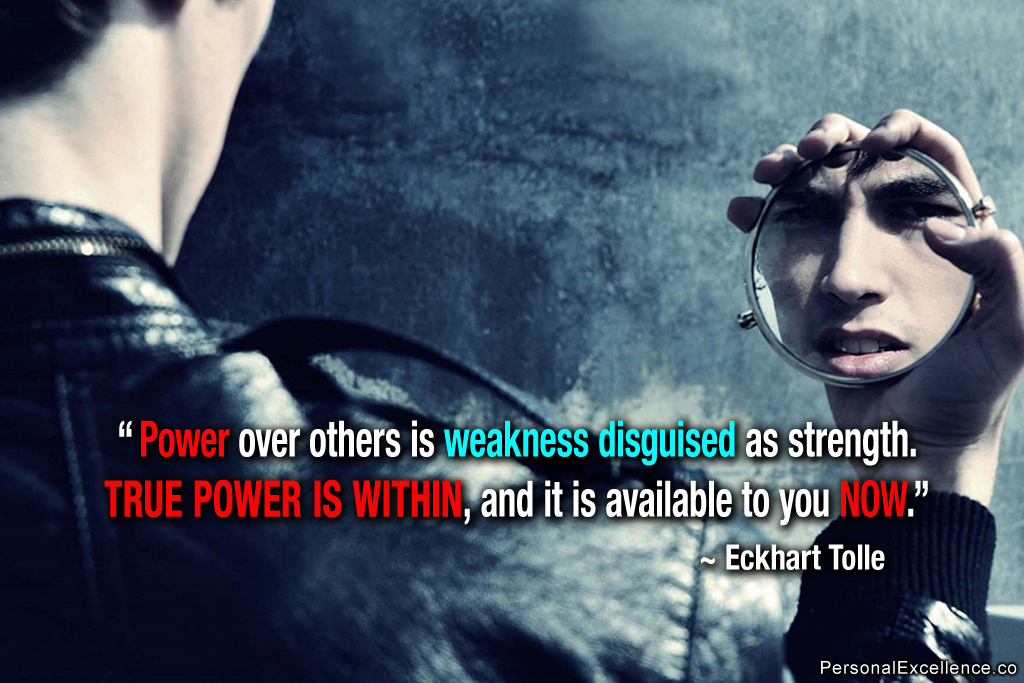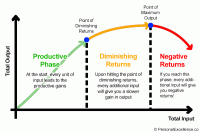
(Image: Hurst Photo)
“Hi Celes, I am an enthusiastic starter and do all things necessary to make any endeavor successful such as efficient planning, detailing, and execution focus.
However, [after getting started,] I find my interest waning and the journey getting stretched to no end. This eventually affects the overall outcome. I would really appreciate if you could share your views how one can overcome this habit of procrastination. This is something that I have struggled with and now that I am starting a new chapter in my life, I would want to set this right and begin this journey being the best that I can be.” — S
Do you have a habit of starting projects, but not finishing them?
Perhaps it’s your new business that you want to launch but you’re still stuck in planning phase. Perhaps it’s the new album you want to launch but you stopped working on it after the first song. Perhaps it’s the book you want to complete but you stopped writing after the first 500 words.
If you have been taking action and working on your goals, that’s a big achievement and you should be proud of yourself! Taking action is your first step to realize your goals.
However, if you have a habit of starting many new things but not finishing them, that’s something to look into. Here are my 10 best tips to finish what you start:
1. Be selective of what you embark on
When you start on a project (especially a large-scale one), be sure that this is something you are passionate about and want to see through. Personally I don’t start something unless I’m absolutely passionate about it.
I have embarked on things that I was half-interested in before, for example learning tennis or learning Japanese. Eventually I stopped them halfway. This resulted in a waste of time and resources which could have been better utilized elsewhere.
Because of that, I’m more conscious of how I spend my time and energy today. If you set a high threshold for what you want to do, the completion rate will be higher.
If you aren’t sure that this is something you really want to do, you can dip your feet into the pool first. Try it out on a small scale and see how you feel about it. For example, if you’re interested in starting a business, read up on it first. If you’re keen to be a writer, try a personal writing project (NaNoWriMo is a good place to start) or do a voluntary writing assignment. Another way is to sit on it for a few weeks. If you think about it every day for a few weeks, then you should give it a go.
2. Estimate the resources you need
In companies it is common to do resource planning, where they estimate how much resource is needed for a project. After which they plan out the necessary manpower and expenses. When we work on a project, we should make a quick plan of the time and effort needed, so we can have a bird’s eye view of the resources needed.
It doesn’t have to be exhaustive. Just a quick outline will help. The point is to have a plan to guide you.
For example Live a Better Life in 30 Days (30DLBL) is a sizable project that took me three months to create, while working on it full time. When I first started working on it, my first step wasn’t to dive in and write as many words as I could. That would be like running a marathon by dashing right at the start. It’s not going to work and it’s going to burn you out before you get anything done!
Rather, I created a skeletal outline of the key tasks, which were (1) Create outline of the book, (2) Put together the raw content, (3) Collate pictures, select quotes, etc., (4) Write the material, (5) Design the cover and interior, (6) Create the sales page and graphics, (7) Tidy up all the details, (8) Market, and (9) Prepare for launch.
With the raw outline done, I then broke down each task into smaller tasks, starting with the first one — create outline of the book. I then moved on to the other sections. Having this outline gives me a bird’s eye view of what needs to be done, so that I could plan accordingly. This brings to my next point on resource planning.
3. Budget your time and energy accordingly
After you create your outline, you should have a realistic idea of the time and effort needed to complete it. Plan out your time and resources accordingly and incorporate the tasks into your to-do list. Block out time in your calendar for the tasks. Give yourself some buffer time as well, in case of contingencies.
A big reason for a loss of enthusiasm is when people underestimate the amount of work needed to bring a goal to life. Last year, I started on a book project that never saw the light of the day. I dove straight in without any plan, thinking that if I kept writing for one to two weeks, I would eventually finish it. Well I was wrong. I spent countless days and nights writing, but the book remained in development hell even after months. In the end, I kept getting new ideas for new projects to work on, and it was time to move on.
Looking back, the biggest reasons why I never completed the book was because (1) I underestimated the work required to finish it, and (2) I was too hung up on unimportant details (see tip #4 on perfectionism). That led to unnecessary rewriting, which prevented me from moving forward. To this day the book sits in my computer. I might get to it in the future, but not now as I have too many things to work on.
Good planning helps you plan out your energy and expectation. You know you have to put in X hours and X effort to get the final output, so you can pace yourself to achieve your desired outcome. This will lead to a higher success rate.
4. Quit being a perfectionist
How many of us delay work because we want to get it right? I’m all for perfectionism and getting the best output, but if your desire for perfectionism is preventing you from getting things done, you should challenge it. If you’re stalled at a stage of a project and you keep revising it again and again, park it first and move on to the next part. Return to this later on and see it with fresh eyes. You may notice that what you were hung up on really isn’t that big of a deal. Also, constantly referring to your plan outline (tip #2) is helpful to get perspective. Your objective is to finish the project, so keep your eyes on the prize.
If your perfectionism is preventing you from getting started, try these two tips: First, break down the task into many little steps, then focus on one part at a time. If you still put it off after breaking it down, then break it down further into mini-pieces. Soon, you’ll be left with such a simple task that you would be wondering what was keeping you from doing this before! Second, give yourself the permission to do a draft version. Meaning, there’s no need to get it done right the first time. Just creating a draft, even if it’s a crappy one, is better than if you don’t do anything at all. Get started and things will roll from there.
5. Commit to it
Once you start, commit to it. Whatever you have planned, do them. Give yourself the option to exit if it’s not in line with your vision (refer to tip #9), but otherwise hold yourself to your word.
Last month I was overseas in Hong Kong for a conference and a business meeting. While I was there, my friends asked me if I wanted to go sightseeing. I rejected the offer because I was working on 30DLBL and I was falling behind my personal timeline. I knew that if I were to go out for the week, the program would never be completed on time, because (a) there was a lot of work to be done, and (b) I had other projects lined up after 30DLBL. I wouldn’t feel happy at all while I was out because I wouldn’t be true to myself. Finishing the program was about my commitment to myself and also to my readers out there who would truly benefit from it. Sightseeing is something I can do at a separate time — it’s not big of a deal.
Likewise for you, ask yourself what’s more important — Going out to party for the weekend or working on that business you have been meaning to set up? The former may bring you some temporary gratification, but the latter is what truly gives you satisfaction. The rewards you get from doing the latter are rewards that you’ll continue to reap long afterwards.
6. Connect with your end vision
You may have experienced this. Whenever you begin on a new project, you’re full of energy and enthusiasm. Then when you get into the thick of things, this energy fades away, bit by bit. You’re still excited about the project, but you’re not so hyped up about the nitty gritty tasks that come as part of the work. After all, it’s the beautiful house you seek at the end, not the bricklaying.
But all the bricklaying IS part of what makes that beautiful house in the end. Every little bit you’re doing now counts towards that end vision. It’s easy to lose sight of this because you’re caught up with the micro-tasks that keep coming, one after another.
The problem here is your end vision is slipping away from you, so bring it back into sight (both physically and mentally). Surround yourself with anything that reminds you of your end goal, such as your vision board, pictures of people who achieved the same goal, and objects that represent the goal. For example, one of my clients has a goal to get a Cadillac one day, so he bought a small toy Cadillac model from Walmart which he puts in front of his desk. In front of my work desk is my life map, an inspiring quote of the moment, and pictures of my top goals. These remind me of my end vision. That’s environmental reinforcement at work and it’s very effective because it doesn’t take any effort on your part (other than the initial setup).
Creating a visual preview or mock up of what you’re doing (where applicable) is extremely helpful too. When I was working on Live a Better Life in 30 Days previously, I would export it into a PDF on a regular basis and scan through it. This small action would excite me since the mock up helped me see the impact of what I was doing on the end output. If you’re working on a blog/website, then preview the site as it would look to your readers, rather than working on the back-end all the time. If you’re working on a computer program, then run and test it as a user.
7. Follow the path of highest enjoyment
I find one of the easiest ways to complete my projects is to be flexible in my project management. In Tips #2 and #3, I mentioned creating an outline of what needs to be done, section by section, step by step. Now, most people will finish the tasks in sequential order. Task 1 comes first, followed by Task 2, then Task 3, etc. Sounds straightforward, right?
I did this for a long time until I realized it wasn’t the most effective method. For example, some days I would feel like doing Task 3, but if I followed the project timeline, I would have to do Task 1 before I could get to Task 2, then 3. The thought of having to do Tasks 1 and 2 first was a downer. This would slow down the project… eventually reaching a halt because working on it stopped being fun. Working on the goal felt like a hollow activity, of going through the motions.
On the other hand, when I give myself flexibility over what to do (while staying true to the end goal), working on the project becomes like a big adventure. For example for 30DLBL, I created the product sales page and book cover design before I started on the book, even though these were the later tasks in my plan outline. Because I was inspired to work on them, the output came readily. The cover design was finished in an evening, while a good portion of the sales page was finished in that same session. It was extremely fun the whole time I was working on it and it felt effortless. After finishing the tasks, I picked the next task I wanted to work on, and then continued from there.
Using this approach makes me feel like I’m in a candy store and I get to pick whatever candy I want. It excites me because there’s an element of choice. I also give myself the freedom to drop a task, move to another task, and return to the previous task when I feel like working on it again. Essentially, as long as I’m working on the goal, I’m progressing. So, it doesn’t matter whether there’s a task that’s not completed — it’s just temporary. And because I’m excited about my work, ideas flow readily and I work faster.
I refer to this as the path of highest enjoyment — doing what makes you feel happiest at the moment. When you do this, you automatically become productive in your work. Try this out and see how it works for you.
Here’s a related post I wrote on how I feel self discipline is overrated: Self Discipline is Overrated
8. Track your progress
Tracking your progress helps you understand how you’re doing and gives you a target to reach. This makes it easier to build up your momentum. Create a project sheet to record your targets and your current status. Specify KPIs (key performance indicators) that you want to achieve. If your goal is to lose weight, your KPIs will be your weight, your fat percentage, and perhaps your performance during your exercise sessions (e.g. the distance covered in 30 minutes, how many weights you lifted). If your goal is to start a business, your KPIs may be your weekly customers, sales, and net income.
Every week, review your progress. What percentage of your end goal have you achieved? Are you on track vs. your target? Why or why not? What are the key things to do next? What is your target for the next week? Tracking makes you accountable to your goal and helps you stay on track.
9. Celebrate what you’ve done so far
Sometimes we get discouraged by all the things we need to do. It seems like no matter what we do, it’s impossible to finish everything. The amount of work overwhelms us and we stop halfway.
Here’s the thing — everything you’ve done so far IS an accomplishment! Many of us tend to focus on the last finishing step as the most important task, but really, everything you’ve done and what you’re doing now contributes to the final product. So celebrate it. Give yourself a huge pat on the back and a big bear hug. :) Celebrate the process: the resting, the doing, the completion, everything. Take this chance to recharge and regroup. When you’re ready, continue on with what you’re doing. You’re really doing a fantastic job!
10. Don’t force it if it’s really not working out
Sometimes, it just happens that you lose interest in the goal. It happens, and it’s normal. We change, our interests change, and we get new ideas and inspiration the whole time. Some people may feel that it’s a waste of their effort if they do something and don’t complete it, so they push themselves to go on.
Personally, I think it depends on the situation. I think whatever effort you’ve put into the task is already a sunk cost, and it shouldn’t factor into your decision of whether to continue doing it or not. The things that should influence your decision are (1) the benefits you will get from completion, and (2) the costs involved to continue on (time, effort, and resources needed). If the goal is really not working out for you, then I recommend you drop it and move on to the next thing. Spending more time on it is just a waste of time. Considering you have no desire to do it anymore, you’re expending a lot of energy to overcome that resistance! Think of it as pushing a car up a hill. For all that energy you spend battling your resistance, you can use it on something else.
It may seem like a big waste to drop all that’s done, but it’s not that big of a deal. You are capable of achieving a lot more than you realize. What you’ve done so far is just a small speck of what you can achieve. Trying to hold on to what you’ve done just prevents more goodness from coming your way.
I adopt the drop-and-go approach as needed. For the 600+ articles you see on this blog, there have been over 200 articles (give or take) that never saw the light of the day. Some are 10% complete, some 30% complete, and some about half done. When I started out, I would make a point to finish every article. I later realized that I was wasting a lot of time writing articles which I had lost inspiration for. On the other hand, when I follow my inspiration, the writing becomes much easier.
You may ask: Wouldn’t all the work that went into writing the partial posts go to waste? Not at all. They add to my 10,000 hours of experience. I learn from writing them, and this learning will come in handy for my future posts.
Give yourself the permission to drop what you’re doing if it’s not working out, and you might just find many new things coming your way after that. Read: Quitting To Win
Of course, don’t start dropping every single thing you’re doing now just because you lose interest. It’s a benefits vs. costs equation. If it’s almost done (99% completion), and the benefits from pushing through that final 1% far outweigh the costs, then go ahead and get it done. It’s a judgment call that you make from weighing out the benefits and costs.
Apply the Tips
Review the 10 tips above — how can you apply these tips in what you’re currently working on? Write down your answers and start acting on them.
Bookmark this guide because it’ll come in handy in the future. When you’re starting a new project, use this list as a guide. If you feel burnt out midway, apply the tips and it’ll help you swing forward.
If you have found this guide helpful, do share it with others on social media. Let’s share this with those who can benefit from it. :)
Get the manifesto version of this article: How To Finish What You Start [Manifesto]
Check out:









 Thanks for reading. If you like my free articles, join my private email list and get my latest updates and articles sent right to your inbox.
Thanks for reading. If you like my free articles, join my private email list and get my latest updates and articles sent right to your inbox.